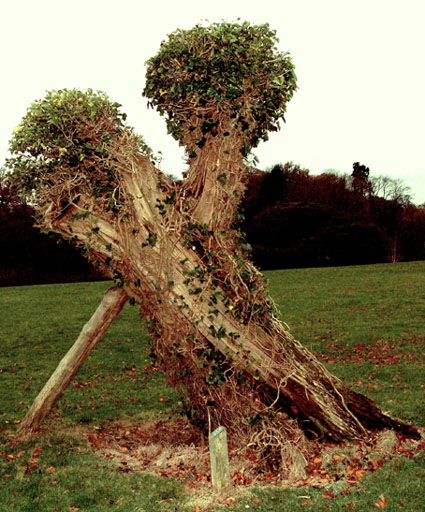| Nick
Jordan
About
Films
Drawings & Paintings
Other
Publications
Texts
Biography
Cartwright
& Jordan

e-mail:
nick@nickjordan.info
|
|
|
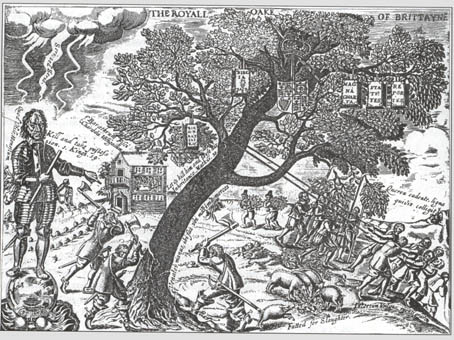
|
MoNO
- The Museum of Native Oaks, is a new museum showcasing
the largest of Britain’s native broad-leaved trees.
Curated by Jacob Cartwright & Nick Jordan, MoNO
draws upon the oak-related collection of The Manchester
Museum, including a 4000 year old shovel, boxes of galls,
insects, newspaper clippings and botanical sheets from
the historic herbarium. Cartwright & Jordan will
also be exhibiting their new collaborative work, including
a short film Descriptions
and Sketches of Some Remarkable Oaks, and presenting
material gathered from a Fieldtrip
to Bradgate Park, the birthplace of Lady Jane Grey,
the Nine Day Queen.
Installation
photos of MoNO at
The Manchester Museum are here
Introduction to MoNO
Records
show that Oak has been resident in Britain, in one form
or another, since the interglacial periods - around
300 000 years ago.
Today, the two native species of the British Isles are
the Pedunculate Oak, or English/Common Oak (quercus
robur), and the Sessile Oak, or Durmast Oak (quercus
petraea).
The Oak has long been perceived as our national tree;
a symbol of strength, endurance and reliability. Deep
rooted in our ecological, historical and cultural life,
the image of the Oak is used as an institutional insignia
for Britain’s countryside and historic environments,
helping us to understand and mark our place in the busy
world.
Nick-named King of the Woods, Monarch of the Forest,
The Stay of the Nation, the Oak has for centuries been
venerated by the Celts, Druids, Romans, Norsemen, and
Royal Family, because of its size, longevity, and nutritious
acorns.
Oak sawdust is still used for smoking food to give it
an agreeable flavour, and throughout history its mighty
felled timber has been of great importance. The Oak’s
sturdy limbs have been used to build ancient henges,
hill forts, houses, barns and halls, including ye original
Shakespeare Globe Theatre, and the great warships of
Sir Francis Drake and Vice-Admiral Horatio Nelson -
the Heart of Oak, celebrated in the official
march tune of the British Navy. Royalist mythology has
it that an English king, Charles II, sheltered in the
branches of an ancient Oak when he was on the run from
regicidal roundheads.
Through this age-old exploitation and reverence we have
come to project human attributes upon the remarkable
Oak, which, coupled with the anthropomorphic qualities
of its twisted limbs and gnarly bark, have led us to
characterise the species with a proud and benevolent
disposition.
Yet, free of myth and symbolism, the Oak has innate
ecological qualities in abundance. Success within our
native woodland, its magnificent longevity, the strength
of its timber, and its role as a home to a diverse multitude
of other species, all confirm the tree’s unique,
biological character….A fact that has not been
lost upon other nations who also consider the Oak their
illustrious national tree, such as the United States,
France, Germany and Moldavia.
|
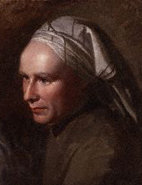
William
Cowper,
pastoral poet
|
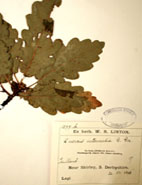 Oak herbarium
sheet,
Oak herbarium
sheet,
The Manchester Museum |
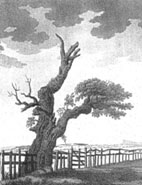
The Parliament Oak
by Major Henry Rooke, 1790
|
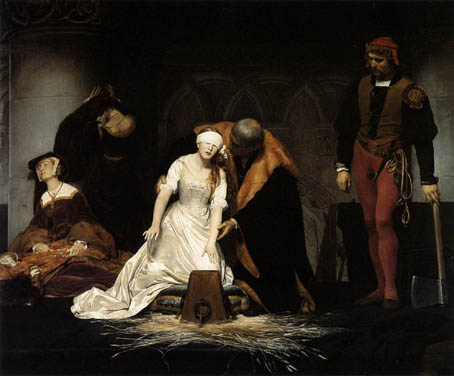
|
The
Execution of Lady Jane Grey
Paul Delaroche (1797 - 1856)
National Portrait Gallery, London, Oil on canvas 246 x 297cm |
|
|
Cartwright
& Jordan
Lord Byron's Stump, 2008 |

Entry
to the Museum is FREE
Opening times:
Tuesday - Saturday, 10 am to 5 pm
Mondays, Sundays and Bank Holidays, 11 am to 4 pm
The
Manchester Museum, The University of Manchester, Oxford Road,
Manchester, M13 9PL
|
|






